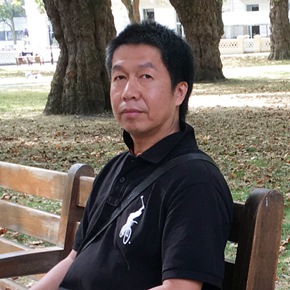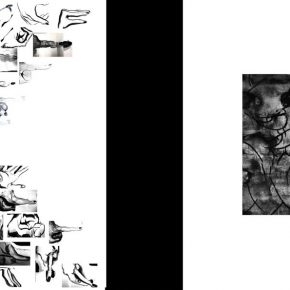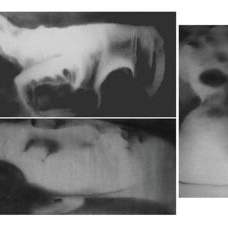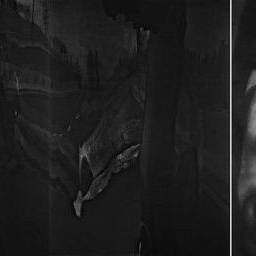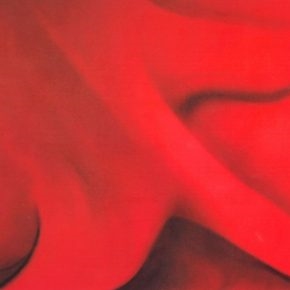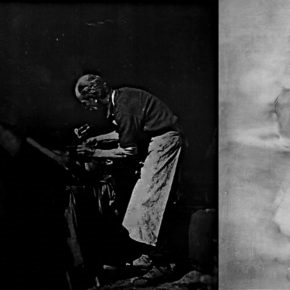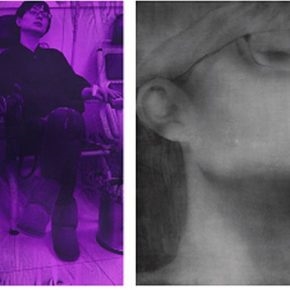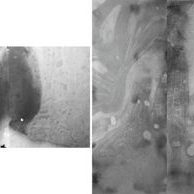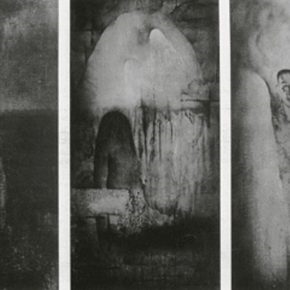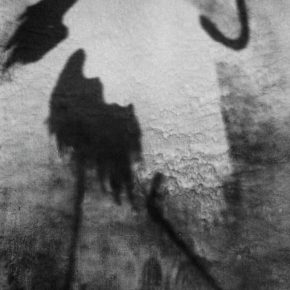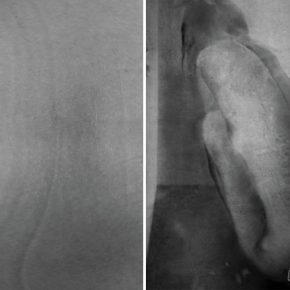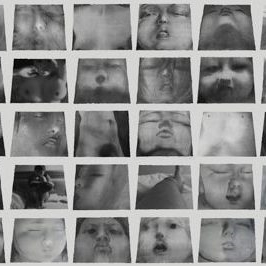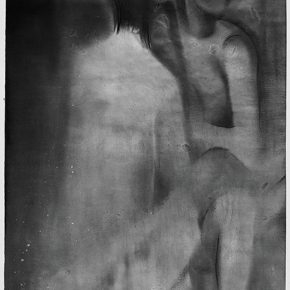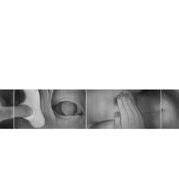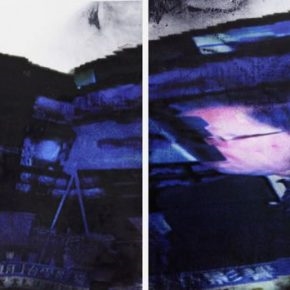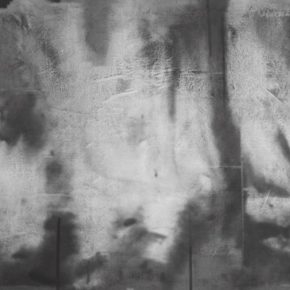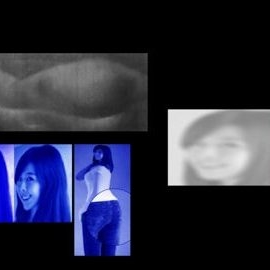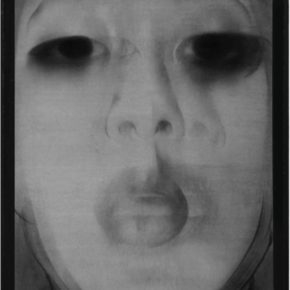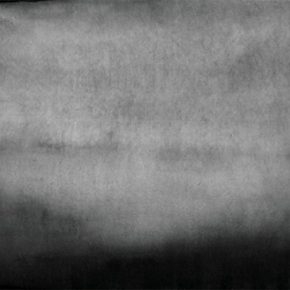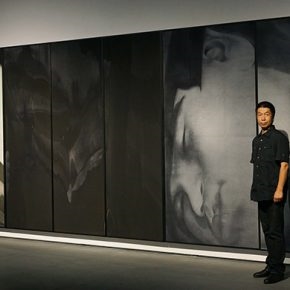Cai Guangbin

Born in China in 1963, Cai Guangbin graduated from the Department of Chinese Painting at China Academy of Art in 1988, he majored in figure painting. Cai is one of the major artists of contemporary Chinese ink painting, and a pioneer and practitioner of photographic ink and wash. He is currently the head and professor of the Department of Chinese Painting and Calligraphy of the College of Fine Arts at East China Normal University in Shanghai. He is a council number of the Shanghai Artists Association and a painter based in Shanghai Academy of Chinese Painting.
“When I wrote the first review for Cai Guangbin ten years ago, I had clearly seen the tendency of the digital image era in his ink paintings, and I first proposed a coined idea of ‘handmade image’, trying to have an appropriate description of his works and it coincided with the artist’s inner needs at that time. In fact, as early as 2001 going through to 2005, Cai Guangbin began to try to explore the visualization expression by drawing, but we can still clearly see his fascination and pursuit of traditional brush and ink in his works at that time. From 2009, he began to use the juxtaposition of landscape photos and ink figure paintings in his experiments, and began to gradually abandon the aesthetic inertia of brush and ink, turning to an expression that is similar to imaging technology and grammar. On the road of contemporary experiments in Chinese ink and wash, Cai Guangbin has taken a big step.”
—An excerpt from “Li Xu: Handmade Image in Black Mirror—Analyses on Cai Guangbin’s Recent Works”
“When digital cameras emerged, digital photos could be immediately modified and produced with computers after they are shot, and there are many unexpected things that appear from this process. When an artist has a concept, there will be corresponding art forms, which must express the true feeling of the artist. It happened that I have been interested in image art for a long time and I also had a lot of ideas, so that I started thinking of the relationship between ink and image.”
—An excerpt from “Liu Chun: Chinese Ink, Ascending in Silence—An Interview with Cai Guangbin”
“In recent years, Guangbin has continued to extract images from Dunhuang Murals and various traditional paintings as a prototype and reproduced them in an abstract and revised way. He called this kind of creation as ‘a(chǎn) new Chinese-style artistic expression.’ One amazing change is that in this type of work, time is no longer of the immediacy, or the sole definition of ‘right now’. It is rather a new time collection comprised by the past, the present and the future. In other words, both the ‘past’ and the ‘future’ are embedded in the ‘now.’ What did the dangling and greenish Dunhuang Murals mean? After a high degree of abstraction and blurring, the image has been processed by modern photographic technologies and then reconstructed in ink color to return to its ancient origin and universal concept. When you carefully read the image, you could feel the two alternate strengths behind the work from a close perspective: the local culture awareness of Guangbin as well as the self-recovering ability of the ink and wash technique. As the compensation for ‘the moment’ in the real world, it is undoubtedly that the creation of Dunhuang motifs has a consciousness around redemption.”
—An excerpt from “Zhang Xiaoling: The Moment and Memory—An Exhibition of Cai Guangbin’s Photographic Ink and Wash”
“It can be said that Cai Guangbin’s art road is closer to the beat of the times. When he entered the inner world of contemporary people from ‘Selfies’ and ‘Snapshots of the Others’, he also had the best way and the most effective way of involving Chinese ink in the contemporary. Cai Guangbin was the first person who was sensitive to the modern meaning of the ‘mobile phone.’ iPhone has almost changed the living way of people. Presently people have relied on a smart phone more than other tools, because it harnesses a variety of functions that human life requires: communication in various ways—phone, voice, short message, WeChat, as well as capturing, reading, recording, listening to music, watching TV, games, entertainment... its versatility makes it become involved in all the time and space, such a prop that is closely related to the present and people quickly become the unique pattern and symbol of Cai Guangbin’s ink painting, and it cannot be said that the artist is sensitive to the way people live.”
—An excerpt from “Jia Fangzhou: Photographic Ink and Wash and Contemporary Presentation—Cai Guangbin’s Art Road”
“Cai Guangbin has created a unique set in the form of painted language. He has abandoned the traditional modeling method of Chinese painting that uses brush and line, and uses the ink and wash rendering, while borrowing computer inkjet technology, drawing works through ‘the use of ink instead of brush’, which makes the visual effect of his photographic ink and wash completely different from the one of traditional ink painting, and it offers a strong visual impact that traditional ink painting does not have. Cai Guangbin’s photographic ink and wash continues the context of traditional Chinese painting, which has evolved from ink and wash, which has maintained the genes of ink and wash, but it is already distant from traditional ink and wash. Its block-face modeling makes the works show a form of the sense of oil painting. In fact, Cai Guangbin has absorbed the concept and technique of block-face shaping of Western oil paintings, which is also related to the influence of Western painting on the teaching of Chinese painting over the decades. His photographic ink and wash is the result of a further evolution on the basis of new Chinese painting.”
—An excerpt from “Wang Duanting: Peeking into the Reality of Humanity—Interpretation of Cai Guangbin’s Ink Paintings”
“In general, Cai Guangbin’s ‘Selfie’ series is more concerned with the understanding and interpretation of privacy, because he believes that ‘private things will always accompany all people, and dominate one’s life, and even influence people’s emotional and psychological activities, including people’s desires in reality and so on.”
—An excerpt from “Lu Hong: There is Still the Ink and Wash—Cai Guangbin’s Road”
“Different from Richter’s artistic concept of ‘turning himself into a photographic art’, Cai Guangbin is in pursuit of the ‘juxtaposition’, which makes the meaning of the work deeper. He said: ‘The use of photography is juxtaposed with the ink and wash form in my works. When they are juxtaposed with the photographic ink and wash in psychology and the art form, it creates a very interesting phenomenon, that is, the space of the work itself and the psychological space of the viewer are extended. While the expression of the characters is overlapped by the spatial consciousness, the meaning of the work becomes more profound.”
—An excerpt from “Pi Daojian: Juxtaposition, Convergence, Displacement—Cai Guangbin’s Contemporary Narrative and Expression of ‘Photographic Ink and Wash’ ”
“Therefore, the reader would find Cai Guangbin is good at thinking and diligent in changing expressions. Cai is constantly highlighting individual experience, replacing the previous memories of the socialist experience, the single narrative of ink and wash is replaced by the multi-expression, along with the geographical differences, the changes of identity continue to move toward the broad public space. Also, behind Cai Guangbin’s style, viewers can see his successive attaching and rebellion, the breadth and depth of his friendship, his keen observation perspective, personalized visual expression and passionate narrative, the individual problems and local problems finally turn to the dilemma of human beings in the process of urbanization that has permeated and implemented his works, and the profound thinking of this problem has ultimately turned to the thought of the broad and profound questions including the dilemma of humanity and the crisis of human nature.”
—An excerpt from “Ji Shaofeng: Between the Reality and Illusion—Reading Cai Guangbin’s Paintings”
Selected Solo Exhibitions:
2018 Currently—Contemporary images and ink painting conception, The Museum of Fondazione Querini Stampalia, Venice, Italy
2017 Contemporary Ink Expression of Intelligent Images—The Research Exhibition of Artist Cai Guangbin, United Art Museum, Wuhan, China
2015 Filming as the Source: Exhibition of Cai Guangbin’s Ink Works, Hong Kong Convention and Exhibition Center, Hong Kong, China
2014 Recreating New Ink Art: Cai Guangbin’s Ink Art Research Exhibition, Huafu Art Space, Shanghai, China
2014 Selfies and Snapshots of The Others—Contemporary Ink Art by Cai Guangbin, Huafu Art Space, International Exhibition Center, Singapore
2013 Selfies and Snapshots of The Others—Contemporary Ink Art by Cai Guangbin, Today Art Museum, Beijing, China
2013 SNAPSHOT! Contemporary Ink Art by Cai Guangbin, T-Museum, Hangzhou, China
2011 Digital Reflection in Ink, Shanghai Art Museum, Shanghai, China
2010 Avant-garde Ink, Xinyisu Museum, Singapore
2009 Solo Show—Cai Guangbin, Kunsthalle Hamburg, Germany
2007 Manual Image—Cai Guangbin Solo Exhibition, Creek Art, Beijing, China
2006 Window—Cai Guangbin Solo Exhibition, Shanghai Academy of Chinese Painting, Shanghai, China
Selected Group Shows Since 2013:
2018 Avant-garde Shanghai, Mingyuan Art Museum, China
2018 Ink-Not-Ink, Guizhou Museum, Guiyang, China
2017 Ink in the Present Day: Contemporary Ink Art Exhibition, Shanghai Himalayas Museum, Shanghai, China
2017 Chinese Contemporary Art Exhibition, Mexico National Museum of Art, Mexico
2017 Ink China—Narrative China: Special Exhibition of the 20th Anniversary of Hong Kong’s Return, Hong Kong Convention and Exhibition Center, Hong Kong, China
2017 Attitude: Chinese and German Contemporary Art Exhibition, YUN· Contemporary Arts Center, Shanghai, China
2016 The 9th International Ink Art Biennale of Shenzhen, Shenzhen Art Museum, Shenzhen, China
2016 Being and Inking—Documenting Contemporary Ink Art (2001-2016), Red Brick Art Museum, Guangzhou, China
2016 Disguised Form—Ink Paintings’ Dimension: The Third Exhibition of Contemporary Ink Works, Guangdong Museum of Art, Guangzhou, China
2015 The Exhibition of Annual Contemporary Art of China 2014, Minsheng Art Museum, Beijing, China
2015 Contemporary Art Now: Invitation Exhibition of Chinese Contemporary Art 2015, Mingyuan Art Museum, Beijing, China
2015 Chinese Contemporary Art Exhibition, Art Museum of Cleveland State University, USA
2015 Ink as a Kind of Material: Invitation Exhibition for Shanghai Artists Flourmill Gallery, Shanghai, China
2015 Water + Ink: The Development of Chinese Figure Painting, Shanghai International Folk Arts Exposition, Shanghai, China
2015 Stratosphere: Chinese Contemporary Ink Painting Exhibition, Duoyunxuan Arts Center, Shanghai, China
2015 I Think, I Am: Commemorate the 30th Anniversary of ’85 Art Movement, Gengsi Art Museum, Nanjing, China
2015 Bloom on the Sea: Thirty Years of Contemporary Art in Shanghai, She Shan Museum of Contemporary Art, Shanghai, China
2014 Shanghai Contemporary Art Exhibition, Hong Kong City Hall, Hong Kong, China
2014 West Says East Says—Chinese Contemporary Art Research Exhibition, United Art Museum, Wuhan, China
2014 Fusion· Convergence: The Official Opening of T-Museum, T-Museum, Hangzhou, China
2013 Portrait of the Times: 30 Years of Chinese Contemporary Art, Shanghai Contemporary Art Museum, Shanghai, China
2013 Re-portrait: The 2013 Hall Three Official 1 Art Exhibition, Hubei Museum of Art, Wuhan, China
2013 A Galaxy of Treasures: Exhibition of Boutique Collections of China’s Ten Art Museums, National Art Museum of China, Beijing, China
2013 International Art Exhibition 2013, VE Art Gallery, Stockholm, Sweden
2013 Shanghai/ Paris: Modern Art of China, China Art Museum, Shanghai, China
2013 Way: Contemporary Ink Art Exhibition, Mingyuan Art Museum, Shanghai, China
2013 Water and Ink: Looking Over the Past Three Decades · 2013 Chinese Ink Art Academic Invited Exhibition, Today Art Museum, Beijing, China
Courtesy of the artist, translated by Chen Peihua and edited by Sue/CAFA ART INFO


